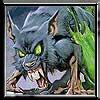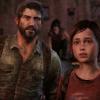How to start off storyboarding
1) What is best way to collect and organize a bunch of note's and idea's?
2) How should I put the story together once I have enough notes and idea's for the game?
3) Should I name the game after the direction the story takes and the story is all written and finalized. Or should I figure out a name then have the story develop around the name I have picked out?
4) Should the storyboard be included inside the design document for the game. Or should it be a separate document in itself?
5) Where do I begin after all my other questions have been answered?
Meh if you had bought the Thompson sisters with you I might answer your questions!
However I suggest for questions 4 and 5 you head over to http://www.sloperama.com/advice.html and go through the lessons list there - it should answer most of your questions there.
1) What is best way to collect and organize a bunch of note's and idea's?
You might want to utilise a software tool for this - a recent thread Story planning software may provide you with the information you need.
2) How should I put the story together once I have enough notes and idea's for the game?
I think I want more information off you as to the context of your notes and idea's. Are these things mostly about the game world itself and not a story per say or do they pertain directly a storyline you have conceived of? Mostly when writing a story for games you have to take into account the technical constraints that a game will bring to your ability to tell a tale.
3) Should I name the game after the direction the story takes and the story is all written and finalized. Or should I figure out a name then have the story develop around the name I have picked out?
If your game is still in project stage then I very much suggest that you simply give it a placeholder name eg: Project Conspiracy etc. You will find that your idea being translated into a reality will change a lot of your current perceptions probably rendering any retail game name obsolete. Using a project name is a fairly common practice.
Death The Kid
Hmm, normally I would consider the storyboard to be the game's actual script plus some concept art. That's like the third step in writing documentation, not the place to start.
This is my guide (it's in the FAQs in the design forum) which suggests starting with a statement of purpose and a features list, and working from there until you have a design document. Then the storyboard would come after my guide ends.
A few answers based on how I work, may not be for you, just my two cents on the subject.
1) What is best way to collect and organize a bunch of note's and idea's?
A. This can vary but I have found Articy Draft to be a great tool to store your thoughts regarding characters, story, even map ideas, etc. http://www.nevigo.com/en/articydraft/overview/
Prior to this I would use old school pencil + paper in a large notepad and write down any thoughts that came to mind. I would carry this over to a word document which contained a more final version of the story, this step has been replaced with Articy Draft, and I find myself brainstorming using this software now.
*Edit* The Articy Draft tool has student and education pricing as well I believe. Thought this was work adding since it can appear as expensive for someone starting out.
2) How should I put the story together once I have enough notes and idea's for the game?
A. This is the part which requires some dedication, it is part creative thinking, and part sit down and just start writing. Set a block of time aside for yourself which is dedicated to writing and use that time to brainstorm and think about how your character(s) will be progressing from event A to event B in your story. Part of this is creative in the sense that you will get some 'cha-ching!' moments when you connect the dots spontaneously with an idea that just jumps to mind. The other half is actually theorizing what is missing from this chapter / story, what obstacles do my characters need, does this make sense. I would reccomend watching this clip regarding creativity from John Cleese back in the 90's. It is old but it is brilliant, and it is also explains why setting a certain amount of time aside for this sort of thing is importnant.
3) Should I name the game after the direction the story takes and the story is all written and finalized. Or should I figure out a name then have the story develop around the name I have picked out?
A. I have trouble naming things as I am working through them because things about the story change, or how I interpret the meaning of the story changes, I usually end up naming things after they are close to completion. (A lot of my work stays 'open' because I hate finalizing things completely ![]() ). Names to me are typically a reflection about what the story meaning is, or a summary of their journey, or even named after the character if the story is heavily focused through the viewpoint of that one character.
). Names to me are typically a reflection about what the story meaning is, or a summary of their journey, or even named after the character if the story is heavily focused through the viewpoint of that one character.
4) Should the storyboard be included inside the design document for the game. Or should it be a separate document in itself?
A. Story boarding is the act of connecting different story panels together, traditionally used in comics, and animation. It is unlikely you are going to storyboard the entire story, otherwise you would have a lot of panels, but it is not unrealistic for your to storyboard the climatic events in your story, or choices for the dialogue in your story. These junctions can be story boarded in your game design document as more detailed examples of the event in that part of the story. General rule, there is no size constraint for your design document, if you are willing to put more info into the design to clarify things for those on the team then definitely add more information, as long as it does not confuse those who are reading it.
5) Where do I begin after all my other questions have been answered?
A. If your goal is create the story for the game, then begin writing. Even if you are not 100% sure where your story is going, or what the story might be, set some time aside which is dedicated to writing and all things creative and just start. Writing down the story to events that happen at the end or the middle of the story is fine, you don't need to write it from beginning to end, just write what you have, and start somewhere. The important thing is that you START, not how or where you start.









